how sculptor Ruth Shafer transforms feelings into art
an interview with artist Ruth Shafer about "sticky, intimate feelings" in art and the therapeutic value of tedious work, plus a brain warming pattern practice
Today I’m excited to share the very first of a new section I’m trying, tending, which will be a mix of essays and interviews about creative practice that do a deeper dive into a particular craft element or process question. I’m experimenting with an interview + exercise format, so below you’ll find just one interview question, then a fun exercise related to that question.
The first interview is with Ruth Shafer, an incredible sculptor I got to know when we were residents at the Vermont Studio Center this past January. (You may recognize her work from the it is ok to make bad art sign she gave me!)
Today’s newsletter might get cut off in your email (Ruth sent a bunch of great photos to illustrate her exercise!) but you can read the whole thing by clicking on the title and viewing it in your browser.
If you have a writer or artist you think I should interview, or you’d like to talk about some element of your own creative practice, email me and let me know!
When Ruth gave her resident presentation at VSC, she shared images from her incredible show The Weight, which she calls “a soft sculpture show about the body at home.” She said those pieces investigate “where the home ends and the body begins” and posed a question I’ve kept thinking about: “are women furniture?”
I invited her to participate in the tending series because I loved the way she talked about process, and I thought the materiality of her practice would be really helpful for writers, too.
If you love her work as much as I do and happen to be in Northern Vermont, you can check it out at Haven in St. Johnsbury, July 28th-30th.
one question for Ruth Shafer
When you shared your work at VSC, there was one sentence that just immediately, viscerally spoke to me. You said, “I just want to make my feelings into something you can look at.” I wrote that down because it captured for me so clearly something I’m also trying to do in my work that I wouldn’t have known how to articulate.
I love that sentence because it’s a kind of artist statement, but I’ve also been thinking about the craft behind that idea. I know something about the process and the craft of turning feelings into poems, or into essays—on the process side, there’s freewriting and outlining and all kinds of revision and editing techniques, and on the craft side, there’s images and line breaks and syntax (and on and on and on, of course).
But, in your work, when you’re working with fabric and textiles and other materials, what is the process and the craft? How do you make feelings into art?
Ruth:
Like ages of artists before me, my work starts in a sketchbook. To warm up my eyes and brain, I draw a lot of patterns, filling pages with shapes and colors, playing with limitations and letting my mind wander around. Then, I’ll move on to brainstorming visual metaphors, starting with an idea that absolutely infuriates or bewilders me, and sketch about it until a physical form takes shape. For example, my 2022 show The Weight is a response to the loaded question ‘Are women furniture?!’ My current series, Comforters, are even more direct; the sentiment is the quilt, chunky lettering of phrases I can’t stop thinking about, like ‘Beware Joyless Urgency.’ Eventually, I’ll evaluate the strongest idea or phrase, to see if I can push the concept to be less obvious and therefore more expansive.
If I decide to make a piece, I keep sketching. I’ll start making notes about materials and construction. What kind of fabric will evoke the emotion I’m going for? What portion do I need to make first? Once I’m really interested in a design, I go searching for second hand materials, looking for fabrics that have the aesthetic history that best supports the concept. Finally, I spend as long as it takes in my studio, referring to my sketchbook and teaching myself how to make something I’ve never seen before.
Turning feelings into art happens as I refine the idea, and by spending days and weeks removing it from my own body and mind, creating a sculpture or quilt that I can step back and look at. The hours of piecing, sewing, quilting, and creating allow me to engage with these ideas at the pace of my own hands. This might be cliché, but I (and countless other artists and craftspeople) use repetitive work to smooth and burnish my internal discomfort, like a stream polishing a stone.
The piece is finished when the conversation I’ve been having is done, and the idea, now realized as art, can stand alone. A good sign is when I feel a little embarrassed about it, because that means I really did put my sticky, intimate feelings out there for everyone to see. And there is a bittersweet relief, because an important but draining relationship has ended, and I can finally turn away.
A dramatic example of this is a piece called Girl’s Dress, which I designed in 2019, about how the innocence of girlhood is overshadowed by the double-standards and impending weight of womanhood. By the time I finally made and installed it in 2022, it had become a mere technical problem to me, like an annoying roommate. But when the show opened, many people told me that Girl’s Dress evoked a visceral reaction in them, such as tears and shocked recognition, feelings I had been grappling with when I initially designed her.
Getting to dress up, drink wine, and bask in exhaustion and compliments at an art opening is great. But the best part of art making isn’t the final product, which gets all the attention. The best part is the flow and tedium, when I am totally absorbed in both my mental and physical realities, where feelings and fabrication are inextricably linked.
If you would like to know more about my ongoing work, you can subscribe to my own Substack newsletter, News from Ruth’s Studio, or follow me on instagram.
if you’d like to try it out . . .
a Brain Warming Pattern Practice exercise from Ruth
To warm up my mind’s eye, or occupy my hands while at a lecture or concert, I fill my sketchbook pages with repeating patterns. While these shapes and meditations often make their way into my other work, this exercise is atelic; done for its own sake, not in order to achieve a particular end. Think of it as going for a walk, but with a few pens.
Find an index card or small piece of scrap paper, no bigger than 8 x 5 inches, and two or three different colored pens, pencils, and/or markers. We are not making Art here, just a controlled doodle that you can recycle the moment you are finished.
Pick a shape, such as a circle, triangle, or amorphous blob, and draw it anywhere on the paper. Cover the page with this shape. It is up to you if the shapes touch, don’t touch, overlap, go off the edges, or stay within. Just be sure to stick to whatever you decide for the duration of this piece of paper.
Change your pen. Pick a repeating pattern such as dots, stripes, or squiggly lines, and fill in all the shapes with this pattern.
Change your pen again, or don’t. Now fill the background of the page, in between the shapes, with another pattern, until the whole page is filled.
And you’re done! Try it a few more times. Change the rules, or make up new ones. But the rules ARE the freeing part of this exercise, at least for me. Being able to be absorbed in creation in a clear, achievable, low stakes way is both soothing and energizing. Put on a song or podcast you love, and see where the limitations take you.
Also, I know I told you that the final outcome doesn’t matter, but sometimes the results are quite pleasing, especially after a few tries. Write a note on the back and mail it to a friend, use it as a bookmark, or write a favorite quote on top and stick it up over your desk.
If you post it, please tag me so I can see!
Write More, Be Less Careful is a newsletter about why writing is hard & how to do it anyway. You can find my books here and read other recent writing here. If you’d like occasional dog photos, glimpses of my walks around town, and writing process snapshots, find me on instagram.
If Write More has helped you in your creative life, I’d love it if you would share it with a friend.



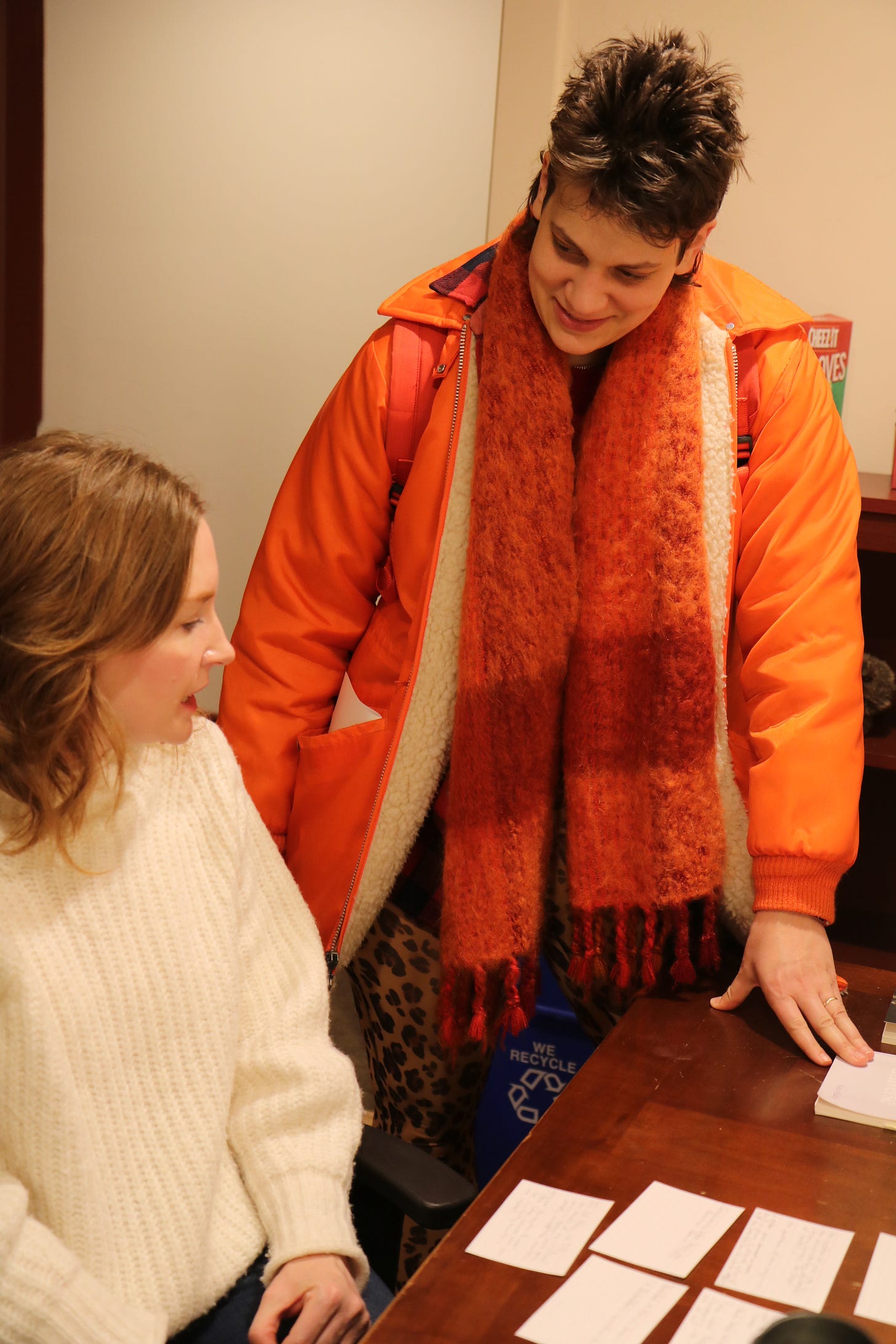
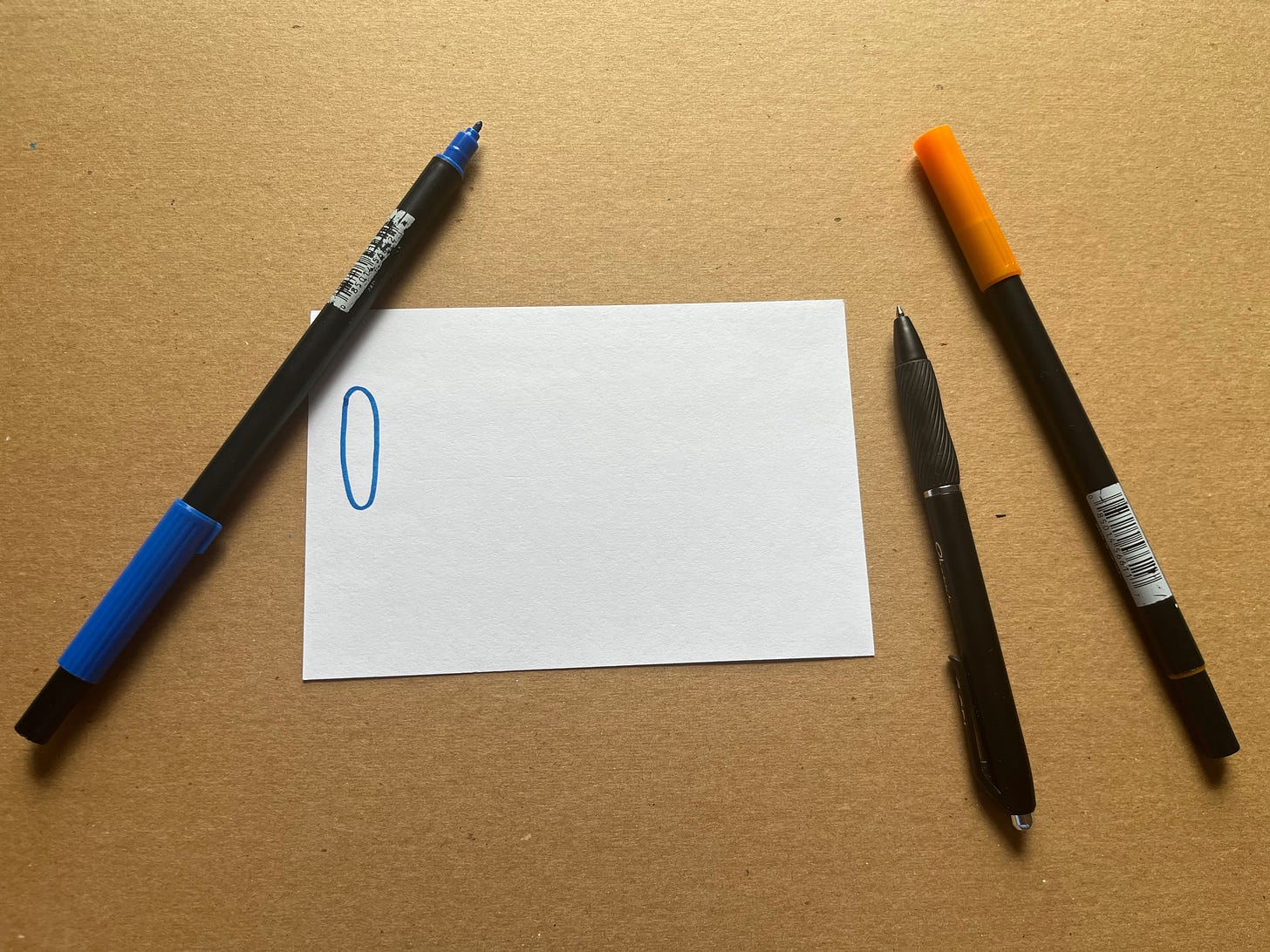
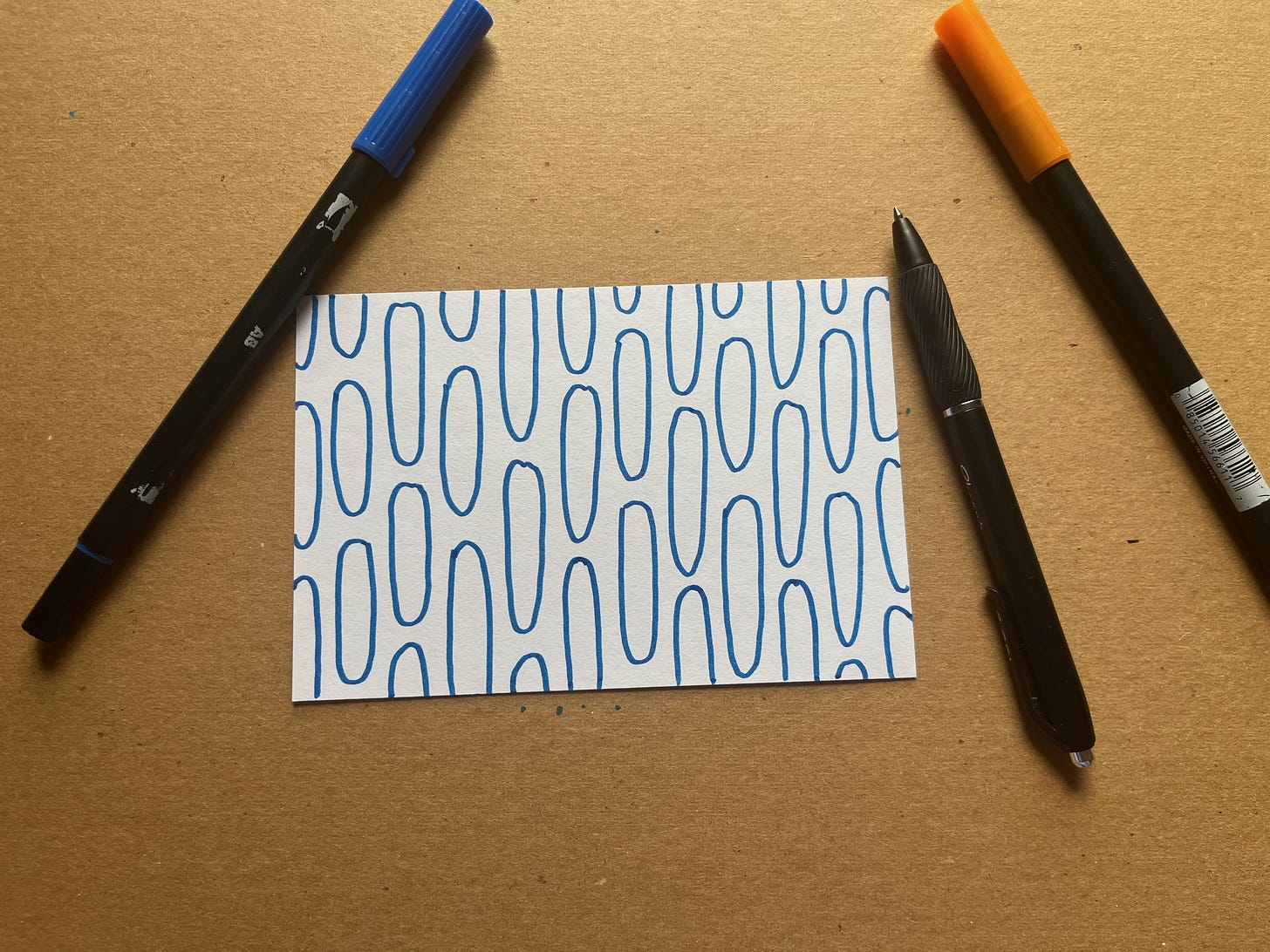
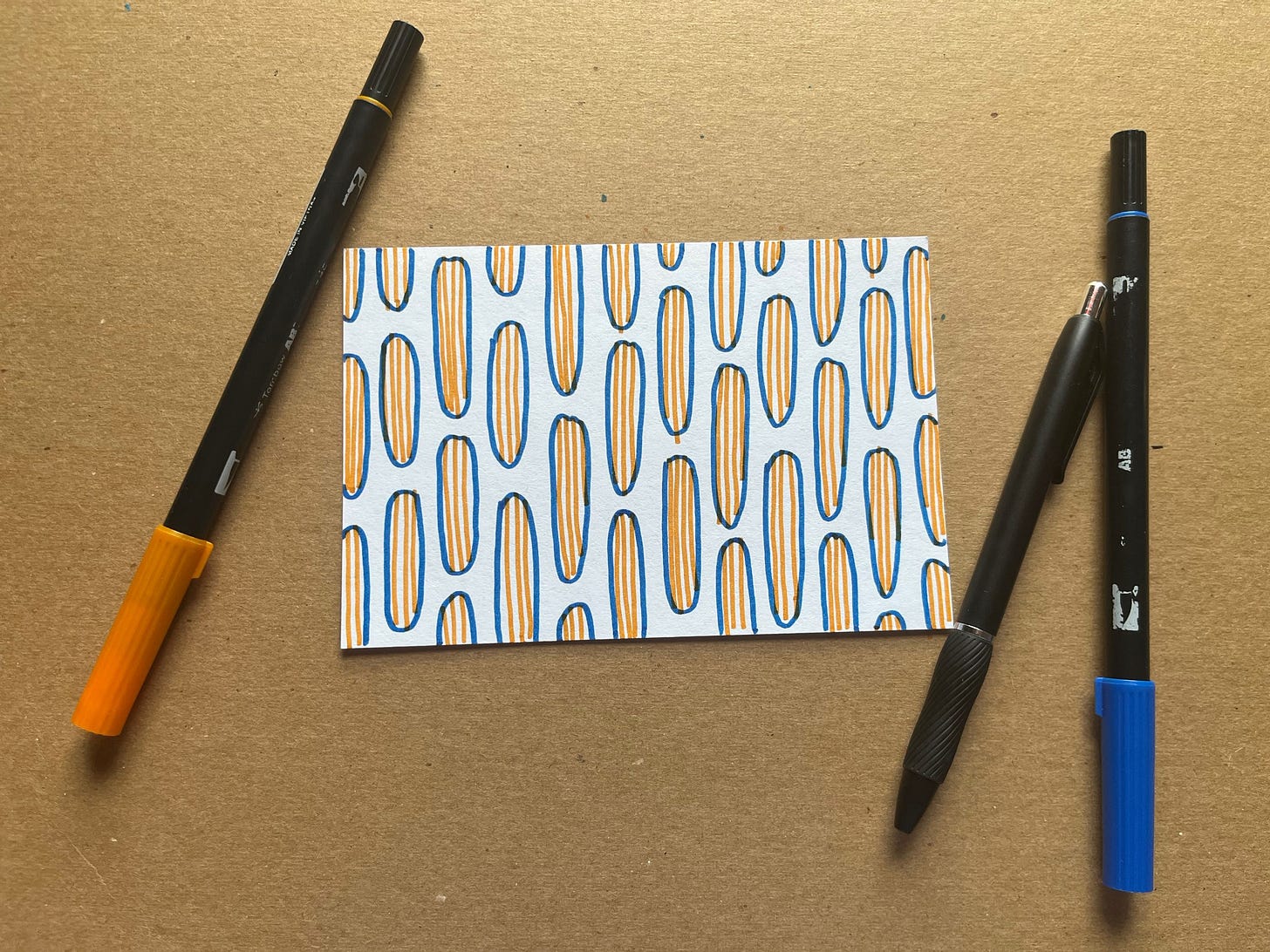
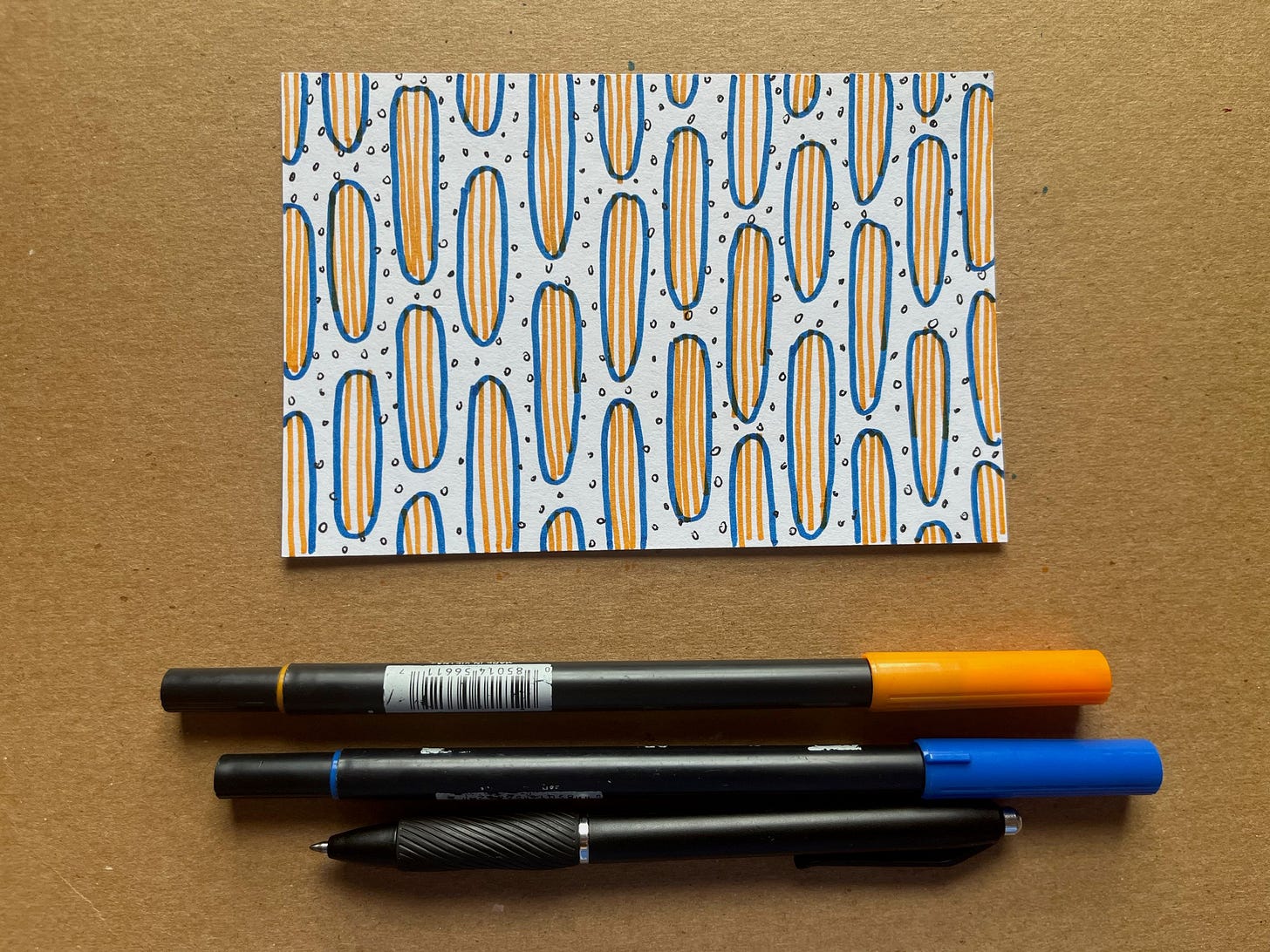
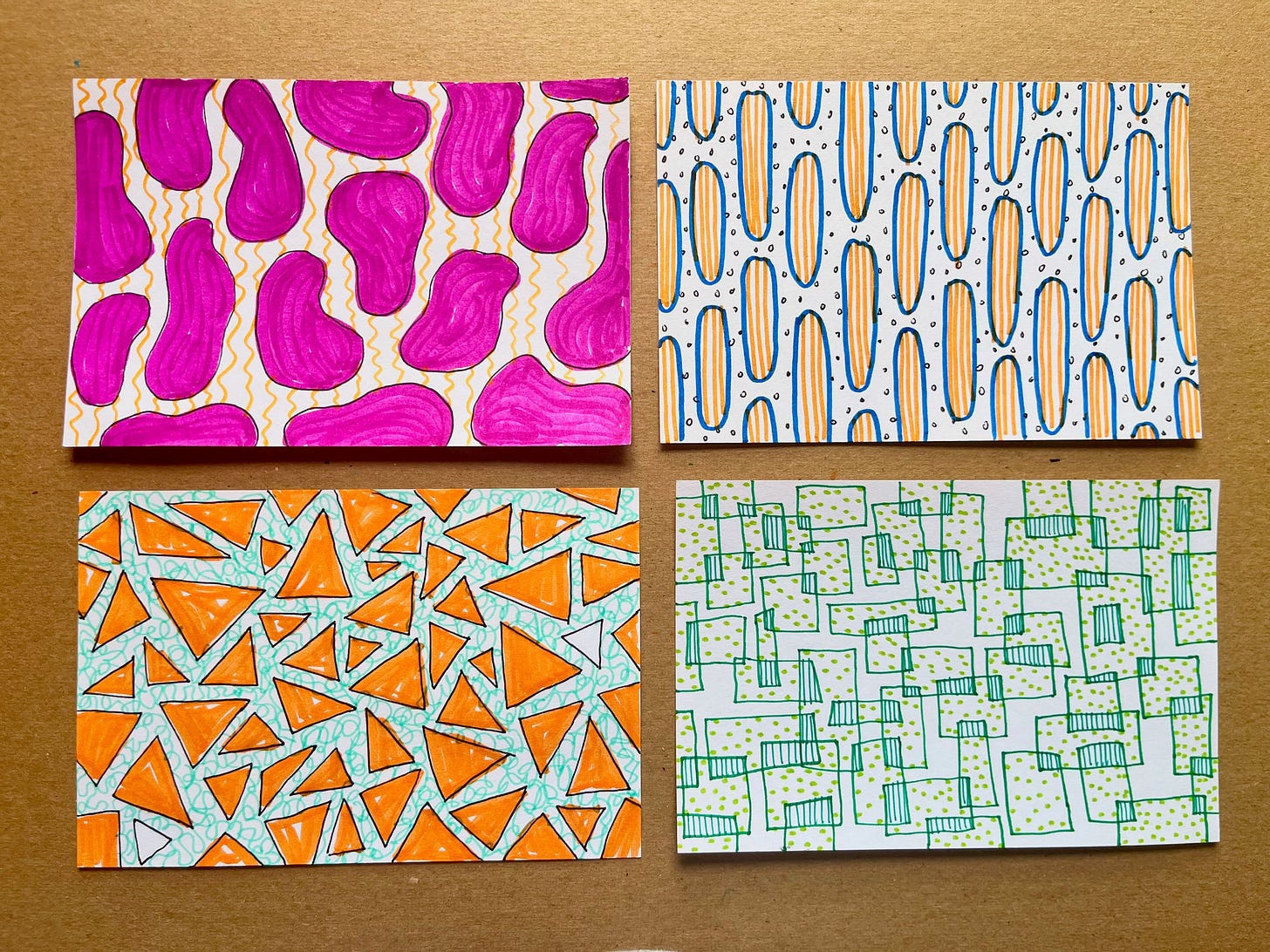
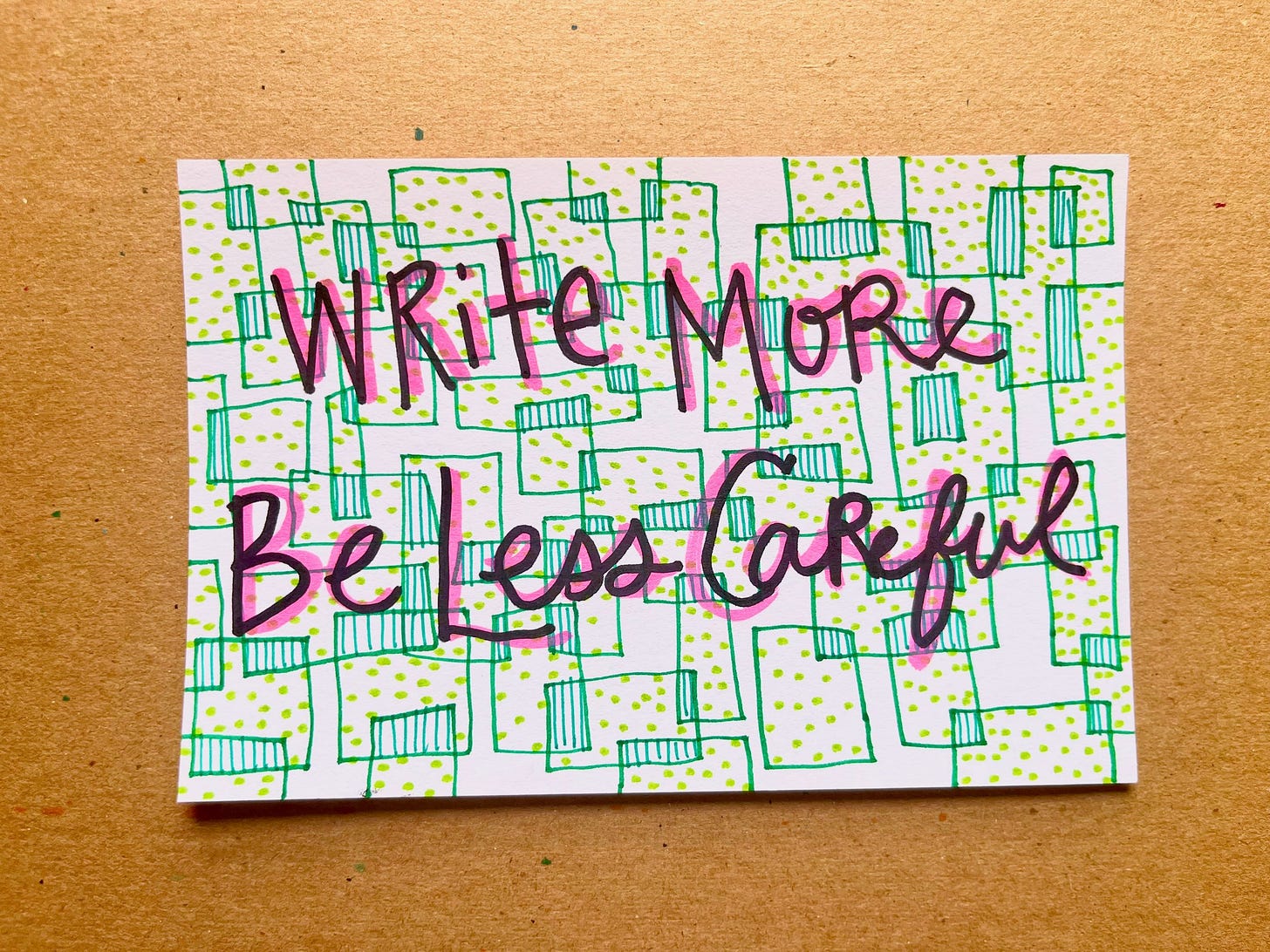
This was very helpful! 'Warming up' before creating art rather than attempting to jump straight into it.
So many things to write down and remember from this interview. I love the idea of creative work being therapeutic. And the exercise!